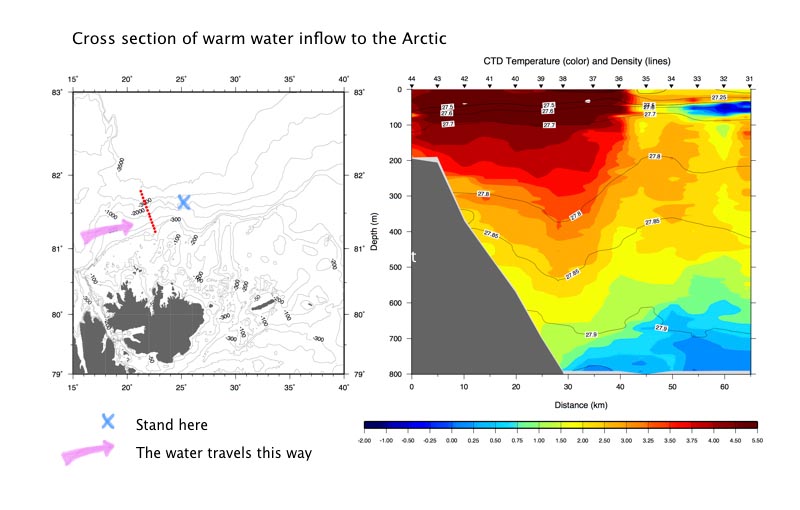The Arctic is the realm of ice. A frozen world of tall snowcapped coastal peaks. Of polar bears and seals. Of explorers trekking ever onwards towards the pole. But there's another Arctic that is not immediately visible, hidden below the surface of the ocean. And down in the deep there is water that could have a big impact on the frozen world above.
If you go down about 100 m, below a cap of freezing water, the temperature rises revealing a layer of warm water. This warm layer can be hundreds of meters thick and is about 4°C warmer than the surface. That might not sound like much but consider that this warm layer is spread out throughout the entire Arctic Ocean. You can go anywhere at all, go down 100 m and you'd find it. The heat contained down here could melt huge swathes of the sea ice if it were allowed to penetrate to the surface.
It's not just that this warm water is everywhere in the Arctic — it has probably been this way for centuries — it's that the water is getting warmer. And as it warms and more regions of the ocean are opened up to intense mixing from passing storms, we could be on the verge of giving this heat access to the ice. Truth is, we don't know just yet. And that's mostly beacause the Arctic is such a hard place to get measurements from. Especially when the thing you want to measure is hidden 100 m down under a blanket of sea ice. But the threat is there and needs to be explored.
On a recent expedition in the Arctic Ocean, oceanographer Bob Pickart set out to measure the flow of this warm water into the Arctic to try and understand how it spreads out, what impact it has and how things will change if the temperature continues to rise. I spoke to him about the colossal journey this water has taken to get to the Arctic — from way down near the equator — and how the heat funneled into the Arctic aboard mighty ocean currents could alter an otherwise icy world.

A snap shot of the warm water current entering the Arctic ocean north of Svalbard. To the right of the section you can see the warm water spreading out into the Arctic Ocean at depth below a colder surface layer. Image courtesy of Bob Pickart.
There have been a couple of posts on this blog about warm water that penetrates into Greenland’s fjords. This is the same warm water we see in the Arctic hidden down below the surface. It has also come from the equator, bringing with it heat that can melt Greenland’s glaciers from the depths and destabilize the ice sheet.
For more info, I recommend checking out the writing of Dallas Murphy from the same research expedition. Like this piece about the warm water invasion into the frozen Arctic.

